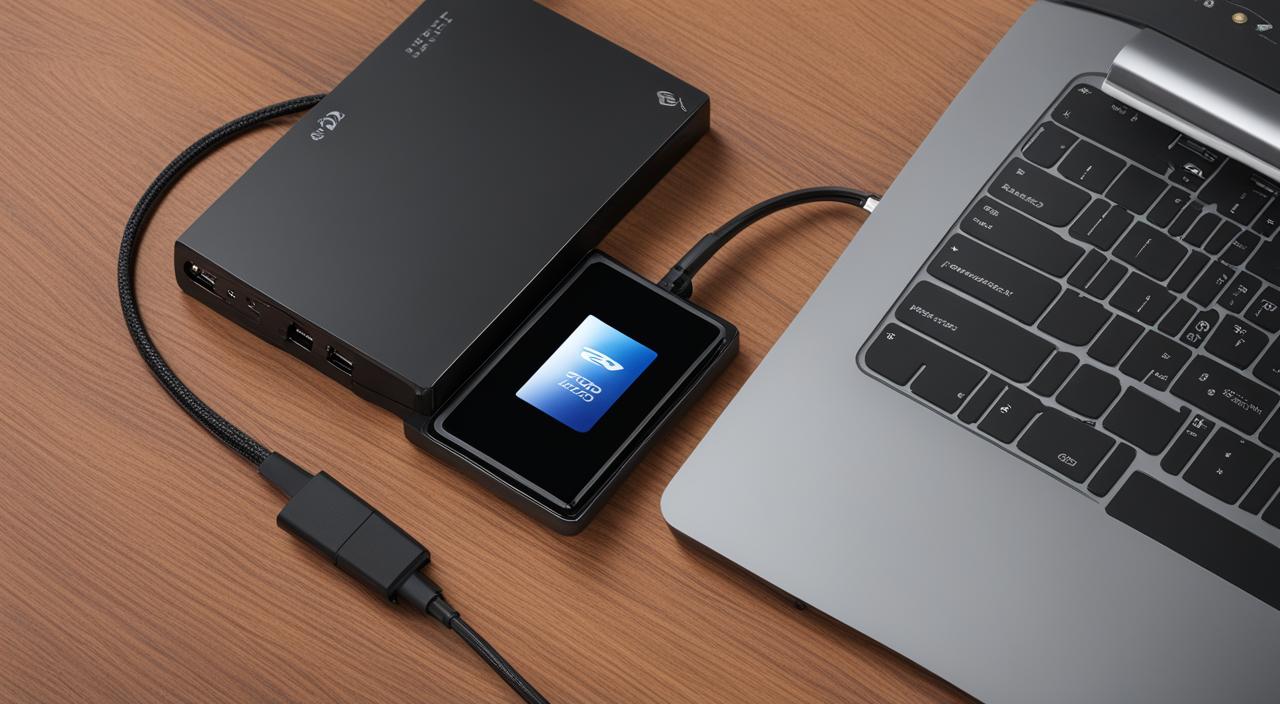Is External SSD Faster Than Internal HDD? (Explained)

When it comes to storage speeds, the debate between external Solid State Drives (SSDs) and internal Hard Disk Drives (HDDs) has been ongoing.
Many users wonder if opting for an external SSD will provide them with faster performance compared to an internal HDD. Let’s explore this topic and shed some light on the matter.
According to experts, external SSDs can indeed match the speed of internal HDDs, especially when equipped with USB 3.0 drives.
These external drives can reach the maximum speed range of 125-180 MB/s, similar to their internal counterparts. However, it’s important to consider the impact of different file sizes and operations on overall performance.
In day-to-day use, the speed of reading and writing small files has a more significant influence than sequential speeds typically highlighted for SSDs. Interestingly, SSDs tend to be slower at reading small files, averaging around 25-50 MB/s.
Nevertheless, this is still considerably faster than the 1 MB/s speed offered by internal HDDs. In scenarios involving mixed file sizes, the performance difference between an external SSD and an internal HDD becomes quite noticeable.
These findings highlight the advantages of using external SSDs, demonstrating their ability to deliver superior speeds compared to traditional internal HDDs. It’s clear that for most everyday read and write operations, the performance gap between the two storage options is significant.
In the following sections, we will delve deeper into understanding the different types of SSDs, both internal and external, and identify the key factors to consider when choosing between them.
What are Internal SSDs and External SSDs
When it comes to storage options, both internal SSDs and external SSDs offer their own advantages and considerations. Let’s take a closer look at the key differences between these two types of solid-state drives.
Form Factors
Internal SSDs are designed to be installed directly into a computer’s motherboard. They come in different form factors, such as the popular 2.5-inch, M.2, and mSATA.
The choice of form factor depends on factors like physical space available in the computer and compatibility with the motherboard’s interface. Each form factor has its own advantages, such as the compact size of M.2 SSDs or the compatibility of 2.5-inch SSDs with older systems.
On the other hand, external SSDs are designed to be portable and connect to computers via external interfaces like USB 2.0, USB 3.0, or eSATA.
This allows users to easily carry their data and connect the SSD to different devices. External SSDs are available in various shapes and sizes, providing flexibility to choose a form factor that suits individual needs.
Interfaces
Internal SSDs offer faster reading and writing speeds due to their direct connection to the motherboard. They typically use interfaces like SATA or PCIe, ensuring efficient data transfer.
The choice of interface depends on the compatibility of the SSD with the computer’s motherboard, as well as the desired speed and performance.
External SSDs, on the other hand, rely on the interface provided by the connection type, such as USB 2.0, USB 3.0, or eSATA.
While they may not match the speeds of internal SSDs, the convenience of compatibility with various devices and the ability to connect to different computers make external SSDs a popular choice for those seeking flexibility and portability.
Overall, understanding the differences between internal SSDs and external SSDs is essential when considering storage options. Factors such as form factors, interfaces, and the specific needs of the user play a significant role in determining which type of SSD is the right fit.

Factors to Consider When Choosing Between Internal and External SSDs
When it comes to deciding between internal and external SSDs, there are several important factors to consider.
One of the key considerations is speed. Internal SSDs, being directly connected to the motherboard, generally offer faster performance compared to external SSDs. The direct connection allows for quicker reading and writing speeds, providing a seamless user experience.
The interface used also plays a significant role in determining the speed of data transfer.
Internal SSDs benefit from the faster interfaces available on the motherboard, such as PCIe or NVMe, whereas external SSDs rely on protocols like USB 3.0 or eSATA. If speed is a top priority, internal SSDs are the preferred choice.
Another factor to take into account is storage capacity. Internal SSDs often come in larger capacities, allowing for ample storage of files and applications.
However, if mobility and additional storage are important considerations, external SSDs offer the advantage of portability. Whether you need to carry your files between different devices or expand the storage capacity of your laptop, an external SSD can be a convenient solution.
Compatibility is another crucial aspect to consider. Internal SSDs are designed to be compatible with specific form factors, such as 2.5-inch, M.2, or mSATA, depending on the computer’s configuration.
External SSDs, on the other hand, offer more flexibility in terms of compatibility, as they can connect to various devices through widely-used interfaces like USB 3.0 or eSATA.






